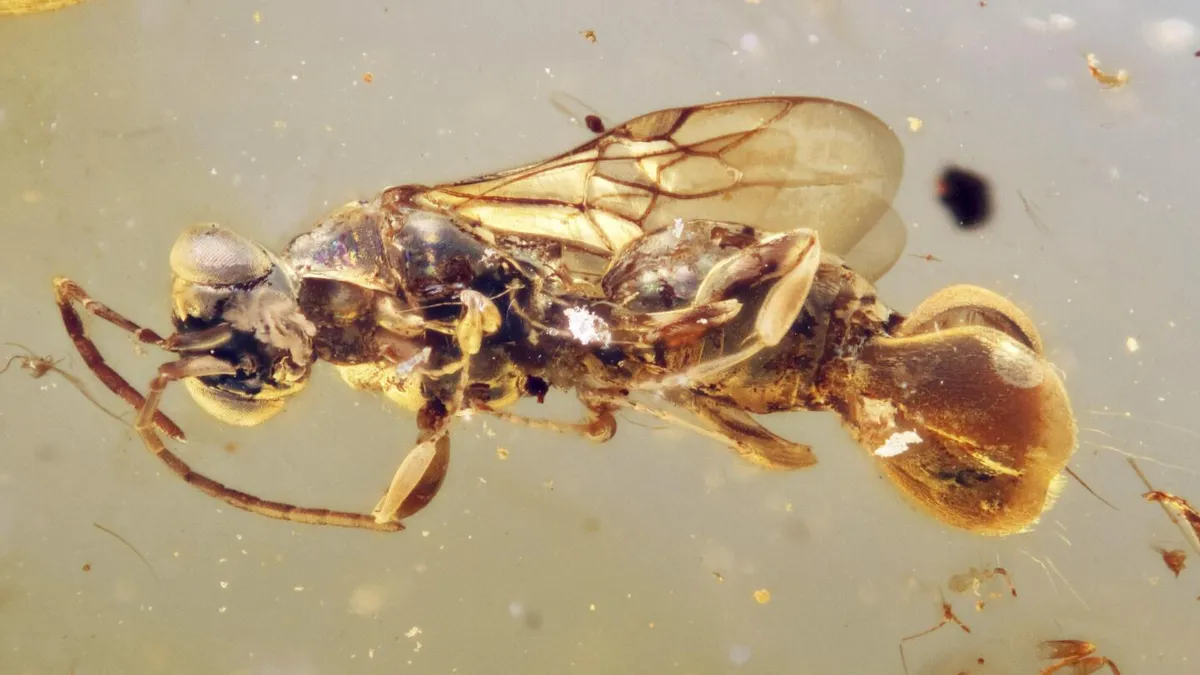
In a groundbreaking discovery, scientists have unveiled an ancient wasp that roamed the Earth during the time of the dinosaurs. This remarkable insect, known for its peculiar body structure resembling a Venus flytrap, was reported on Wednesday. The wasp's unique features suggest it may have had the ability to seize and snatch its prey effectively.
The wasp, scientifically named Sirenobethylus charybdis, possesses an abdomen equipped with flappy paddles adorned with thin bristles. Study co-author Lars Vilhelmsen from the Natural History Museum of Denmark described these paddles as akin to “a small bear trap attached to the end” of the insect. This fascinating morphology raises questions about the wasp’s predatory strategies and behaviors.
Researchers uncovered over a dozen female specimens preserved in 99-million-year-old amber from the Kachin region of northern Myanmar. The wasp's flaps, along with its teeth-like hairs, bear a striking resemblance to the carnivorous Venus flytrap plant, known for its ability to snap shut and digest unsuspecting insects. However, scientists hypothesize that the wasp’s unique structure was not intended to crush its prey but to immobilize it, allowing the wasp to lay its eggs with ease.
This ancient wasp exemplifies a parasitic strategy shared by many modern-day wasps, such as cuckoo and bethylid wasps, which exploit other insects for reproduction. Unlike any known wasp or insect, the Sirenobethylus charybdis displays an extraordinary adaptation that piques the interest of entomologists and evolutionary biologists alike.
“I’ve encountered numerous strange insects, but this must be one of the most peculiar-looking ones I’ve seen in a while,” commented Lynn Kimsey, an entomologist from the University of California, Davis, who was not part of the research team. The discovery not only sheds light on the wasp’s unique adaptations but also invites further investigation into the diverse evolutionary pathways insects have taken over millions of years.
The naming of this unique wasp draws inspiration from Greek mythology, particularly from a sea monster that stirred up whirlpools by swallowing and expelling water. The study, published in the journal BMC Biology, involved researchers from Capital Normal University and the Beijing Xiachong Amber Museum in China, highlighting international collaboration in the field of paleobiology.
While it remains uncertain when the Sirenobethylus charybdis went extinct, the examination of such unusual insects allows scientists to comprehend the extraordinary capabilities and adaptations insects have exhibited throughout history. Gabriel Melo, a wasp expert at the Federal University of Paraná in Brazil, remarked, “We tend to think that the cool things are only found today. But when we have this opportunity, we see that many really exceptional, odd things already happened.”
This discovery not only enriches our understanding of ancient ecosystems but also emphasizes the importance of studying historical insects to grasp the vast diversity of life that has existed on Earth.